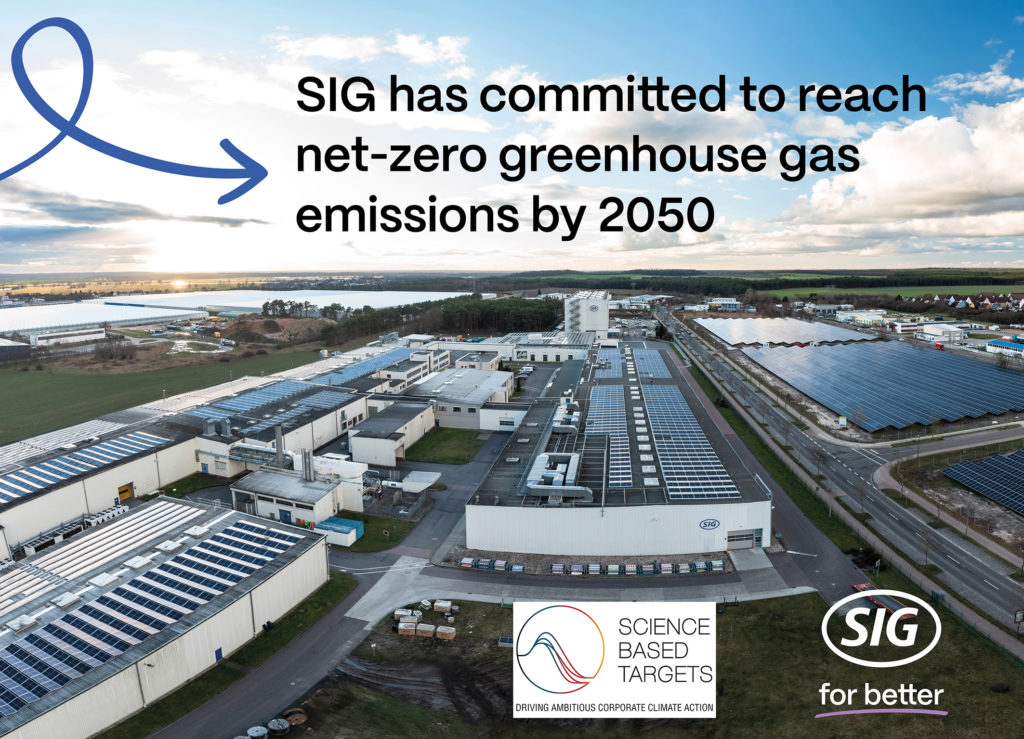Commitment to reach net-zero greenhouse gas emissions by 2050
SIG received approval for its group-wide Net-Zero science-based target from the Science Based Targets initiative (SBTi). The company has committed to reach net-zero greenhouse gas (GHG) emissions across its value chain by 2050 – the most ambitious commitment available through the SBTi process. Of the 2,000+ companies globally with a public net-zero pledge, SIG is among the first 325 companies to have its target validated by the SBTi.

SIG has set a new series of near and long-term science-based emissions reduction targets with the SBTi, committing to reach net-zero – the point at which a balance is achieved between emissions produced and emissions taken from the atmosphere – by 2050. These targets are significantly more ambitious than the company’s previous GHG reduction targets, approved by the SBTi in 2018 and 2020. The move sees SIG look beyond its own operations and commit to the decarbonization of its full value chain in line with climate science.
SIG’s new near-term 2030 commitments (using 2020 as the baseline year) include:
- 42% absolute reduction of scope 1 and 2 GHG emissions
- 100% renewable electricity through 2030
- 51.6% reduction of scope 3 GHG emissions per liter packed
SIG’s new long-term 2050 targets include:
- 90% absolute reduction of scope 1 and 2 GHG emissions
- 97% reduction of scope 3 GHG emissions per liter packed
Samuel Sigrist, CEO at SIG: “The approval of our Net-Zero pathway by the SBTi is a milestone achievement that showcases our dedication to decarbonizing our operations and value chain. Our new targets are considerably bolder than our previous GHG reduction targets and have been well received by our stakeholders. Decarbonizing our business will not be an easy task, but we’re excited to speed up our journey to net-zero as one of the first 325 companies that have received SBTi approval.”
Meeting the Paris Agreement goals and limiting global warming to 1.5°C requires net-zero carbon emissions globally by 2050. The SBTi’s rigid approval process helps ensure that SIG is using a robust, clear, and scientific framework to contribute to global efforts to mitigate climate change impacts.
The main ways SIG is reducing its operational emissions (scope 1 and 2) are its 100% renewable electricity commitment and outstanding on-site solar installation program, as well as exploring low carbon energy sources to lower direct emissions.
SIG’s products play a major role in reducing emissions across the value chain (scope 3), due to the amount and types of raw materials used. Going forward, the company’s priorities are to use less aluminum foil in its aseptic carton packs, work with suppliers to reduce emissions across the supply chain, further improve energy efficiency with new filling lines, and increase collection and recycling of used packaging.
Source: SIG

You must be logged in to post a comment Login